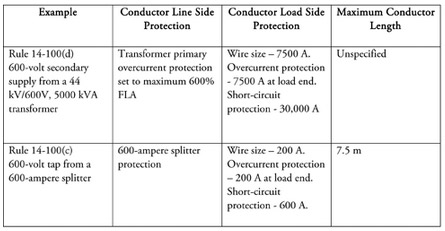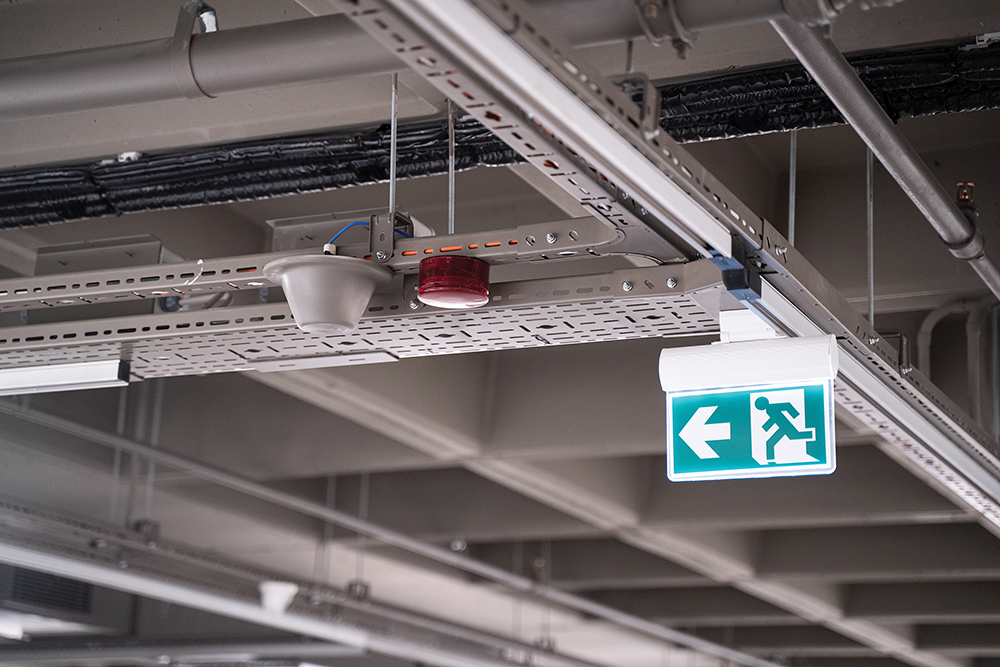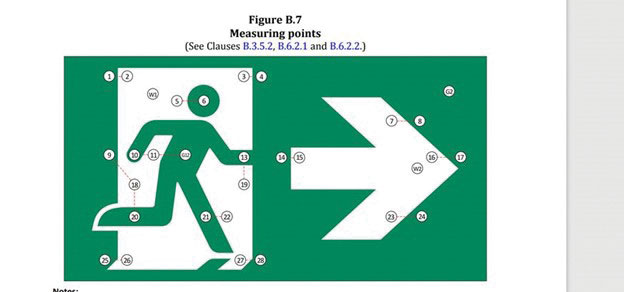Rule 14-100 has requirements for reducing wire sizes connected to splitters, junction boxes and for control circuits such as pushbutton stations. The rule prescribes the minimum construction requirements for mechanical protection and maximum unprotected lengths of conductors so as to produce a safe installation. The rule is consistent in its overall requirements except for Sub-rule 100(d), which appears to be totally at odds with the remainder of the rule.
We see that Rule 14-100(d) specifies that conductors from the secondary side of a high voltage transformer (impedance up to 7.5%) may be installed without any limitation in length as long as:
- they terminate in overcurrent protection,
- the transformer has secondary protection, maximum 250% of FLA,
- the transformer’s primary side is protected in accordance with Rule 26-252(1), (2) and (3); and
- the wiring is protected against mechanical damage.
Let’s look at an example – installation of a 5000 kVA, 44 kV/600V transformer. The secondary full load amperes of this transformer will be approximately 5000 amperes. If the transformer’s secondary overcurrent protection does not exceed 250%, Table 50 permits overcurrent protection on the primary side up to 600% FLA for a circuit-breaker and 300% for fuses.
Let’s assume that the transformer has primary protection set to 600% as permitted by Table 50. This would allow up to 30,000 amperes secondary fault current (6 x 5000 amperes). Assume secondary protection set to 150% FLA at the load end of the secondary conductors would provide overload protection. Since overcurrent protection is located at the load end, 30,000 amperes short-circuit protection for the conductors will be provided by the transformer’s primary side protection. And you likely noticed that the maximum length of unprotected wiring is unspecified.
In comparison, let’s look at Rule 14-100(c) which permits conductor sizes to be reduced at splitters or junction boxes as long as:
- the reduction in ampacity is to not less than 1/3 of the larger,
- the conductors are protected from mechanical damage,
- the conductors terminate in overcurrent protection no greater than the ampacities of the conductors; and
- the of conductor length is no greater than 7.5 m.
An example might be a tap from a 600-volt, 600-ampere splitter. Here the conductor ampacity must not be reduced to less than 200 amperes and the length of unprotected wiring restricted to maximum 7.5 m. One must provide 200-ampere overcurrent protection.
Based on our two examples, we can summarize the differences between Rules 14-100 (d) and (c) as shown in table 1.

No doubt you noticed that in neither example is there any overcurrent protection at the conductors’ point of supply. In our second example, the wiring length is restricted to 7.5 m. In the first example even though the conductors may experience much higher fault currents, there is no restriction in conductor length. What do you think?
As with previous articles, you should always consult with the electrical inspection authority for a more precise interpretation in each province or territory as applicable.










Find Us on Socials